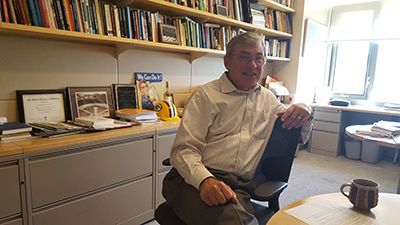Resource Overview
This page focuses on the course 15.662x Shaping the Future of Work as it was taught by Tom Kochan in Spring 2016.
This course, which is offered by MITx on the edX platform as a Massive Open Online Course (MOOC), examines what made it possible for workers in the twentieth century to realize a rising standard of living throughout much of their careers, and then focuses on what changed, why conditions changed, and the relevance of this history for shaping the future of work.
15.662x was developed from the residential MIT Sloan School of Management MBA course, 15.662 Managing Sustainable Businesses for People and Profits.
Resource Outcomes
Course Goals for Students
Students in the MOOC learn:
- A historical perspective and overview of work and employment policy in the United States and around the world.
- How the roles of firms, employees, and public policy have changed and created the labor market we see today.
- The status of the current labor market in more detail: What does it look like? What types of jobs do we have, and what skills are required? What are emerging trends in how firms organize work, and in the role of labor market institutions such as unions?
- Resources and tools you can use to plan your own career paths in the workplaces of the future—those of the next generation.
Additionally, there are three overriding lessons and action steps for for business leaders enrolled in the MOOC:
- Make “high road” businesses the norm and not the exception.
- Rebuild worker bargaining power.
- Get business, labor, government, and education leaders working together to build an economy that works for all.
Instructor Insights
"I’ve been studying work and employment relations, and related topics, for over 40 years. I’ve never been more concerned about the economic mess we are leaving the next generation, nor more optimistic about the possibilities for the future—if we start to address some of the challenges in front of us. This is what motivated me to build this course and to teach it online. I want to reach people from all over the world, and to engage them in a discussion about what we need to do to improve work for the current generation, and particularly, for those of the future."

Tom Kochan in his office at MIT Sloan. (Photo by MIT OpenCourseWare.)
Below, Professor Tom Kochan describes various aspects of how he taught 15.662x Shaping the Future of Work.
- Teaching Online to Improve Residential Education
- Adapting Content, Communicating Differently
- Valuing the Contributions of Others
- Assessment in an Online Course
- Reaching Audiences More Effectively
Learn more! The following Residential Digital Innovations pages provide more information on how residential students can benefit from interacting with online students through a MOOC.
Curriculum Information
Prerequisites
None
Requirements Satisfied
None
Offered
MITx offers a free version of this subject on the edX platform: 15.662x Shaping the Future of Work.
Assessment
Grade Breakdown
The students’ grades were based on the following activities:
- 40% Attentiveness questions
- 60% Assignments
Instructor Insights on Assessment
Student grades in this course were based on attentiveness questions and peer-reviewed assignments. Attentiveness questions were worth one point and were based directly on the content of the videos they followed (2 incorrect attentiveness questions were dropped). The peer-review assignments required students to submit their work to fellow classmates, who graded them based on criteria provided. Students were also asked to grade the work of five classmates each week.
Student Information
Enrollment
63% of the 130 participants with verified enrollment obtained certificates.
Breakdown by Age
Although the median age of participants was 31, participants from age 16 to 85 enrolled in the course.
Breakdown by Profession
Participants came from across the occupational spectrum and included, among others, musicians, electrical engineers, writers, college professors, physical therapists, and electricians.
Typical Student Background
Participants in the course came from 144 countries.
They possessed a variety of educational backgrounds: 19% had completed some or all of high school; 41% had college degrees; and 30% had advanced degrees beyond college.
Participants enrolled in the course for a variety of purposes: Educators were interested in using the curricular materials in their high school classes and in other, more focused, vocational courses. Union leaders were interested in learning more about what other people thought the role labor should be in today’s workforce. Entrepreneurs were trying to figure out what it takes to build a good organization. There were also several participants who were just entering the labor market and were interested in discerning productive pathways for themselves.
How Student Time Was Spent
"Each time I teach the MOOC, I record different weekly introduction videos. This practice is similar to what I, and many professors, do in a residential classroom: Sunday night, you look ahead to the next week, to the syllabus and lectures you’ve planned, and think, “Okay, so what else is going on in the world that I want to bring into this session?” Sometimes what I think I’ll incorporate becomes eclipsed by a more pressing current event, and I’ll make a last minute change. Sometimes that makes for more work, but it’s also the exciting part of teaching a course that has real-world relevance."
Online participation
3-5 hours per week
- Watch short video lectures covering key topics
- Participate in polls gauging changing student views on the issues
- Answer discussion questions and participate in forums with peers
- Complete readings, and engage with supplementary resources and other materials from subject experts
- Complete specific assignments (for participants seeking the course certificate)










